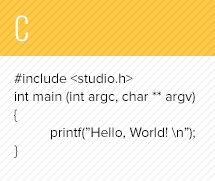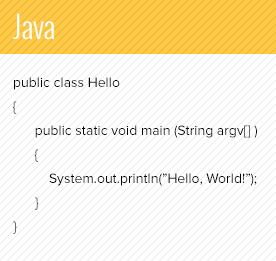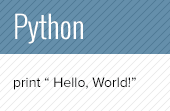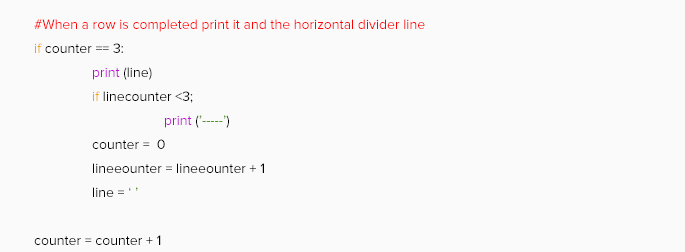 Credit: AleksandarNakic / E+ / Getty Images
Credit: AleksandarNakic / E+ / Getty Images
In today's technology-driven world, programming is highly in demand. The skill can lead to lucrative, innovative career opportunities. Aspiring programmers need to choose which programming languages they want to study.
Many professionals select Python, which requires little setup and is easy to write. Knowing exactly where and how to start learning it, however, can be challenging.
In this guide, beginner Python developers can find an introduction to the basics, learn where to learn the language, and discover helpful resources.
What Is Python?
Python is a highly versatile programming language used in many applications. Users can build a video game using the PyGame library, write a quick script to automate a task, or create a web application. Python offers a balance between productivity, speed, and readability.
The Origin of Python
Guido van Rossum was a key developer in creating a programming language known as "ABC" in the 1980s. Though he was pleased with the language, there were still issues. He wanted to create a simple scripting language that incorporated the best parts of ABC, leaving out those areas he identified as drawbacks.
The language Guido van Rossum envisioned was simple for anyone to pick up and understand. He also wanted the language to appeal to Unix/C hackers by focusing on readability and development speed. Rossum named his new language "Python."
Applications for Python
Python is a general-purpose, interpretive programming language, meaning developers can use it for nearly anything. However, developers use Python most frequently for the following applications:
- Web Development: As the program of choice for web development, Python offers readability and security. Python frameworks like Django, Flask, and CherryPy can streamline the code for web developers. Platforms like Google use Python due to its power and compatibility with other programming languages.
- Machine Learning: Machine learning forms the basis of artificial intelligence (AI), which requires stable, flexible code. Python offers those qualities alongside easy access to existing libraries and frameworks. AI developers can use libraries like NLTK and spaCy for natural language processing, which drives AI assistants like Alexa.
- Data Analysis: Data science is an interdisciplinary field combining math, statistics, and computer science. Python's accessibility and simplicity make it an ideal programming language for data scientists with no prior coding knowledge. Python's code libraries save data scientists time by eliminating the need to program their tasks from scratch.
Why Learn Python?
Job candidates should learn Python to meet the demands of current and future digital markets. According to the TIOBE Index, Python ranked second among popular programming languages in September 2021.
Out of the top three programming languages, Python is the only computing language to see an overall rise in popularity since 2019. By comparison, C and Java (ranked first and third, respectively) have declined in popularity.
According to the TIOBE Index, Python ranked second among popular programming languages in September 2021
Even with Python's popularity, tech professionals should still learn other programming languages alongside Python. Many developers use more than one programming language in their jobs. Employers may value specialized skills in less common programming languages.
Top Online Programs
Explore programs of your interests with the high-quality standards and flexibility you need to take your career to the next level.
Productivity and Simplicity
Python is known for its productivity and simplicity. Typing just a few words in Python creates functioning code. Python's extensive library, combined with its ease of use allows users to write code faster than programmers in other languages.
For example, reading an input text file in Java takes several lines of code; however, in Python, this action only requires "file.read()." This feature gives programmers quick prototyping and easy-to-understand code in a matter of seconds. Additionally, Python does not need any initial setup to start executing code.
Python is also easy to understand. Below is an example of how Python streamlines productivity and simplicity. The string of code illustrates how only a few lines can accomplish a task. Python is especially straightforward when compared to the same task written in Java.
Python:

Java:

Below is another code comparison that illustrates Python's simplicity. This code prints "Hello, World" to the console. Note that Python uses less code and the actual words are simple, direct, and easy to understand.



Structure and Readability
Python enforces only a few rules to ensure programmers write clean code.
In the example above, the Java code uses braces for structure. The implied statement is, "Everything within these braces is working together to accomplish something." The braces themselves determine the block of code.
In Java, the placement of these braces is a style choice — placement does not matter as long as the braces surround the code the programmer cares about.
Python programmers must use indentation to structure code blocks instead of braces. If programmers do not execute indentation correctly, the code will not run.
The following code example illustrates Python indentation. The indented pieces of code are part of the "if" statements they are contained in. Indentation gives your code enhanced structure and readability.

How to Learn Python
Because Python is an open-source language and relatively easy to learn, students can pursue several options to study the programming language.
Those without prior coding experience may want to consider classroom learning. Highly structured classroom curricula can provide a solid foundation in computer science as students learn Python. Classroom learning can provide benefits like individualized instruction from teachers and peer collaboration opportunities. These programs run online and in person.
Learning Python without a background in computer science can be challenging but possible. Learners can find many guides, tutorials, and other learning resources online. Self-study is a cost-effective way to learn Python, particularly for specialized job functions.
Ensure the courses and tutorials teach Python 3 and not Python 2, which developers no longer support.
Learning Python at Colleges and Universities
Pursuing a computer science degree at a college or university can be a great way to get hands-on experience. Professors can guide you through some of the more challenging aspects of programming. Computer science programs usually offer several concentrations that students can pair with Python to develop career-ready skills.
Applied Computer Science
- Artificial Intelligence
- Computer Architecture and Engineering
- Computer Graphics and Visualization
- Computer Security and Cryptography
- Computational Science
- Computer Networks
- Databases and Information Retrieval
- Health Informatics
- Information Science
- Software Engineering
- Concurrent, Parallel, and Distributed Systems
Theoretical Computer Science
- Theory of Computation
- Information and Coding Theory
- Algorithms and Data Structures
- Programming Language Theory
- Formal Methods
Given Python's versatility, tech workers can apply the programming language to many fields. Students pursuing computer science, software engineering, and information science degrees take similar foundational courses focusing on applied programming.
However, a computer science degree is not always essential to land a computer programming job. Alternative education options, including coding bootcamps, are an option for some students. Nonetheless, holding a computer science degree can open doors to more career opportunities and higher earning potential.
Thinking About Pursuing a Degree? Read More:
- Best Bachelor's Degree Programs in Computer Science
- Best Master's Degree Programs in Computer Science
- Computer Science Scholarships and Financial Aid
Using Online Python Tutorials
Online tutorials are effective and affordable resources you can use to learn Python. Online tutorials can benefit both novice and senior Python programmers. Many of these options are low-cost, making them ideal for people trying to save money as they acquire new skills or refresh old ones.
Python.org
The official Python website is a great place to start learning Python. The site provides resources like brochures, FAQs, official downloads, and educational guides. Python.org also includes a tutorial covering Python's foundational functions and an index of syntax, objects, and modules for quick reference.
The official site's tutorial provides a good primer for Python, but it does not cover everything. Fortunately, the website maintains an extensive database of books, community platforms, and third-party tutorials to further your Python proficiency.
Udemy
Udemy offers 155,000 online courses — both free and paid — in a variety of fields, including computer science. Some of these courses offer Python lessons dedicated to specific topics like machine learning and financial analysis.
One notable Udemy course is their comprehensive 2021 Python bootcamp program. The course, updated annually, boasts over 1 million students. This program also updates the curriculum each year to reflect developments and changes in Python.
LearnPython.org
LearnPython.org is a free online tutorial that teaches coding in a browser-based platform. The interactive tutorial features several chapters covering basic, advanced, and data science-focused Python lessons. The creators shape their curriculum around the LearnX Python developer certification, a valuable resume credential.
Students can join the site's Facebook group to ask questions and discuss course materials. The site also allows users to create and share their tutorials for free through GitHub. LearnPython.org also offers free tutorials in other programming languages.
YouTube
YouTube offers free video tutorials for Python programming. The videos combine visual and auditory learning elements to appeal to students with different learning styles. YouTube also features troubleshooting videos. When learners encounter an issue in Python, they can often find a solution with step-by-step instructions on YouTube.
Creators on YouTube post both short videos dedicated to specific topics and longer tutorials that last several hours. Some channels organize full courses into numbered playlists, like the Python tutorial for beginners by Telusko, which features 110 videos.
Attending Python Bootcamps
Bootcamps are intensive learning programs dedicated to teaching practical tech skills. Career preparation bootcamps usually run for 3-6 months. Some bootcamps offer similar resources to higher education institutions, including career centers and alumni networking opportunities.
Python bootcamps offer online and in-person formats. In-person programs provide a traditional learning experience, while online learning can offer students increased flexibility. Online bootcamps can come in synchronous (scheduled class times) and asynchronous (no set meeting time) formats.
Bootcamps can be a cheaper, faster alternative to earning a degree. However, they tend to give the most value when paired with previous experience and education. Bootcamps may also require a large time commitment. Some full-time bootcamps feature a rigorous daily schedule of 9 a.m.-5 p.m. Monday through Friday for the duration of the program.
Thinking About Attending a Bootcamp? Read More:
Career Outlook for Python Programmers
According to the Python Developers Survey 2020, 42% of Python programmers work in software development. The Bureau of Labor Statistics projects a 22% increase in the job outlook for software developers, quality assurance analysts, and testers from 2020 to 2030.
The report also reveals that Python is widespread in web development. Web developers can use Python frameworks such as Flask, Django, and CherryPy for their work. Python is also used in new and emerging technology like robotics and AI. Proficiency in this language can lead to lucrative positions in computer and information research.
According to the Python Developers Survey 2020, 42% of Python programmers work in software development.
Major companies like Reddit, Netflix, IBM, Facebook, and YouTube use Python in their platforms. Google uses a mix of Python and C++ in its search engine.
Python development roles can be broken down into three categories based on experience. The next few sections explain the role and average pay for each job level.
Junior Python Developer
Duties:
- Learn how to code and contribute to projects quickly
- Work under the guidance of a mid- to senior-level developer
- Complete smaller, less complex coding tasks when starting out. Scale up to autonomous work within several months
Average Annual Salary (2021): $77,830
Required Education and Experience:
- Hands-on experience, such as an internship or other related position, to demonstrate Python knowledge
- A bachelor's degree in computer science is preferred
Python Developer
Duties:
- Understand and deliver business requirements from the senior developers related to Python programming
- Work autonomously and in teams with fellow programmers
- Maintain familiarity with Python frameworks and libraries
Average Annual Salary (2021): $111,900
Required Education and Experience:
- 3+ years experience working in a professional setting as a developer
- Bachelor's or master's degree preferred
Senior Python Developer
Duties:
- Lead conversations with clients to ensure the architecture/design of the Python project is maximized
- Lead Python developer teams to accomplish coding tasks for a project
- Maintain familiarity with many different Python libraries and frameworks
Average Annual Salary (2021): $130,270
Required education and experience:
- 5+ years experience working in a professional setting as a developer
- Demonstrated experience in leading projects and teams
- Bachelor's or master's degree preferred
Frequently Asked Questions About Python
How long does it take to learn Python?
Depending on your current knowledge level, it can take 5-10 weeks to learn Python fundamentals.
Is it hard to learn Python?
Some people advertise Python as easy-to-learn compared to other programming languages. Like learning any new skill, becoming proficient can be challenging yet rewarding at the same time.
Can I learn Python for free?
Yes! The Python community has created many free tutorials and other resources to learn Python. Python.org maintains a list of free books and guides for those who wish to learn the language.
Is knowing Python enough to get a job?
While knowing Python may help you find a job, that knowledge alone might not land you the position. Some jobs require college-level education and previous experience. Entry-level roles may also require candidates to know several programming languages.
Recommended Reading
Take the next step toward your future.
Discover programs you’re interested in and take charge of your education.
